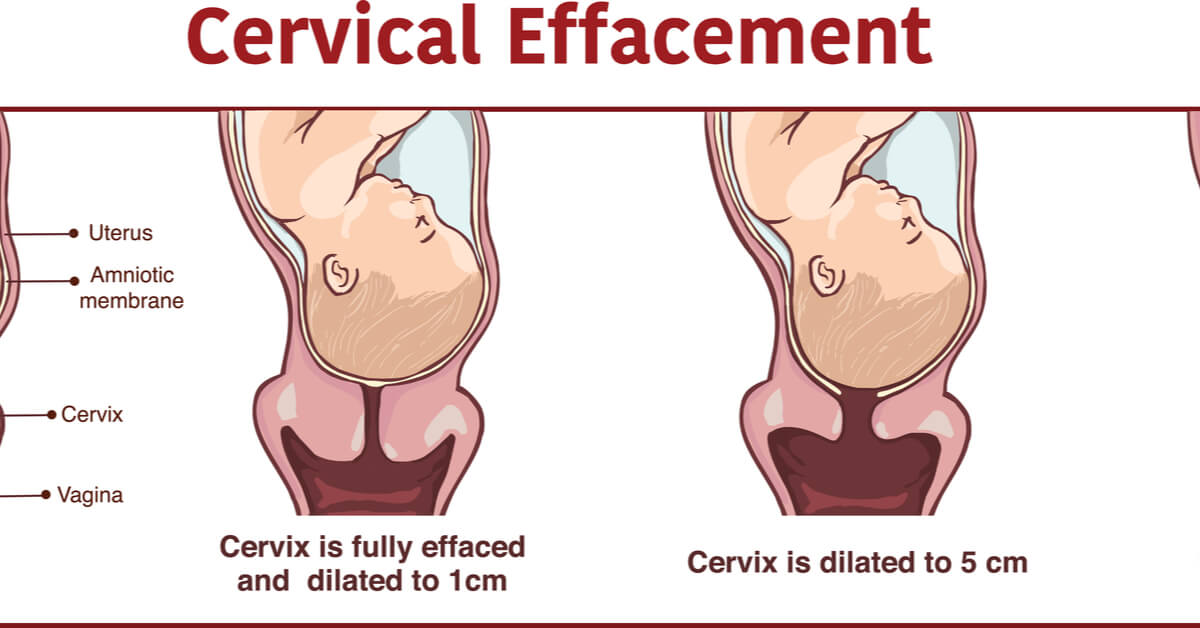From the first moment you find out that you are pregnant, you dream of the day you will hold your baby in your arms. As we approach the end of the pregnancy process, the excitement of birth increases. Natural birth or caesarean section, no matter what type of birth, you may have many curiosities about the moment of your baby’s birth. It is important to interpret the symptoms well, especially since the process proceeds more slowly in vaginal deliveries.
The birth adventure of each pregnant woman progresses differently, and the symptoms may be different in each expectant mother. However, the most important thing required for your baby to be born normally is the opening of the cervix. Thanks to this opening, the width necessary for your baby to go out will be provided. Generally, 2 cm opening during pregnancy and after is considered as a harbinger of delivery. For this reason, cervical opening should be followed closely.
As the expected day approaches, your baby starts to apply pressure towards the birth canal, and you start to feel pain in your lower back and groin areas with this pressure.
When it’s time for the baby to leave your body, it starts to move in the direction of gravity. The cervix begins to soften and thin. This phenomenon is called “cervical effacement”.
Cervical effacement, that is, the softening and thinning of the cervix, occurs in the last week of pregnancy and constitutes the first stage of labour. Then the cervix gradually dilates. The entrance of the uterus, which is 0 cm at the beginning, can be opened from 1 cm to 10 cm as the birth progresses. When the cervix reaches 10 cm, it means your baby is ready to be born. The opening of the cervix is defined as “dilation”.
In short, the cervical opening can be defined as the vaginal opening necessary for the birth to occur and for the baby to come out.

Signs of When to Give Birth
Vaginal birth is a process consisting of 3 stages.
- In the 1st stage, cervical effacement and dilatation (cervical opening) take place. Then, the mucous structure -vaginal discharge- that closes the uterine entrance is thrown out. Following this, the water has broken, that is, the opening of the amniotic sac in which the baby is located. The opening is accompanied by contractions.
- In the 2nd stage, the baby moves through the birth canal to exit the cervix, which has reached a 10 cm opening, and comes out.
- In the 3rd stage, the placenta, called the baby’s partner, is expelled from the body and the birth process is completed.
Looking at these stages, we can say that the first signs required for your baby to be born are cervical effacement and cervical opening. Birth cannot begin without the proper opening necessary for your baby to come out. For this reason, when the opening of the uterus begins, the cervix is examined at regular intervals by the midwife or doctor, and the course of enlargement is followed.
What Does Cervical Openness Mean in the Birth Process?
Normal birth is a process that develops completely depending on the cervical opening. However, this process progresses at different times in each pregnant woman.
It is seen that pregnant women who will give birth for the first time have a longer period. While it takes approximately 12-14 hours for the opening to occur in the first normal delivery, this period may decrease to 4-6 hours for women who have given their second or subsequent delivery.
The reason for this is that the uterine muscles have experienced the necessary expansion and stretching before, and therefore they open more easily. The prolonged opening of the cervix in the first vaginal deliveries plays an important role during delivery. It takes a long time until the cervix reaches the opening of 3-4 cm.
After 4 cm, if the first natural birth occurs, it is expected to be 1 cm per hour, and if it is not the first birth, 1.5-2 cm per hour is expected. For this reason, you can have an idea about when your baby will be born by performing a doctor’s examination every hour after reaching the 4 cm opening.
How Many Should There Be for Birth to Begin?
Since the uterus reaches 4 cm opening slowly, it may be appropriate for you to spend this period at home. It would be more ideal for you to live in the comfort of your home rather than spend this long wait in the hospital. At home, you can track the frequency and severity of contractions accompanying the openings. Misinterpretation of the symptoms may cause premature behaviour especially in first-time mothers.
Generally, after 4 cm of opening, the openings will continue by accelerating. Therefore, the 4 cm gap is considered the critical determinant of delivery. However, your baby coming out through the birth canal, the birth, is possible when the cervix reaches 10 cm wide.
What Happens If Sufficient Cervical Opening Is Not Provided?
In some cases, opening may stop and does not continue. Sometimes 1-2 cm opening is reached, and no improvement can be made for days, sometimes there is no progress after 4 cm width for 6 hours or more. In such cases, external medical intervention may be required. These interventions can be:
- Artificial pain
- Stripping of the membranes
- Bursting of the amniotic sac
- Caesarean section
These interventions are made when the expected cervical opening is achieved. If there is no change after the critical opening of 4 cm, your doctor may need one of these interventions after examining you and your baby.
Does 1 Centimetre Cervical Opening in the Uterus Herald the Beginning of Birth?
Under normal conditions, there is no cervical opening in women, that is, it is considered 0 cm. When it’s time for your baby to be born, your body begins to prepare itself for birth. When will the birth occur if there is 1 cm opening in the uterus?
The 1-2 cm opening cannot give precise information about when the birth will take place. Depending on the natural birth experiences you have experienced, this period may differ.
After 1 cm opening, opening may not occur for hours. For this reason, 2 cm opening during pregnancy is not a sure sign of the onset of labor. Normal birth is a gradual process and labor will not begin until the appropriate width for your baby to pass through is provided.
Would you like to share your experiences and questions as a comment?
Have a nice and healthy day!







